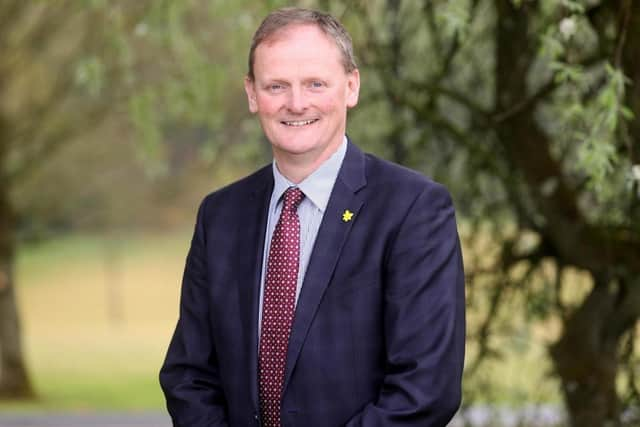Farmer levy to fund bTB badger cull
and live on Freeview channel 276
Details of the new scheme were discussed at farmers’ meetings, held in Counties Down and Fermanagh earlier this week.
It is envisaged that voluntary levies on milk and slaughtered cattle – 0.02p/L and £1/head respectively– will be introduced to fund the new measure, which should kick-in during the late summer/early autumn period of 2023.
Advertisement
Advertisement
This time table is based on the proviso that a Stormont Assembly and Executive will be in situ to pass the required secondary legislation.


Ulster Farmers’ Union president David Brown attended the Co Down meeting. He said that the organisation fully supports the new measures.
According to the UFU representative, farmer funding a badger cull was the only option available, if this measure was to be introduced.
He added that the Union did not want the levy monies to be collected by DAERA. It was for this reason that Animal Health and Welfare Northern Ireland (AHWNI) had been approached to facilitate the role.
Advertisement
Advertisement
Subsequent discussions with AHWNI had been held with the directors of the organisation agreeing to co-ordinate and manage the administration processes associated with the new levy.
A separate company will be established to carry out the badger cull. A model very much centred on the approach now being taken in England has been agreed for Northern Ireland. A mix of night-time shooting and trapping of badgers in ‘hot spot’ areas will be taken in this regard.
Significantly, the strategy steps required to effect a badger cull have been agreed by all participating stakeholders making up Northern Ireland’s TB Eradication Partnership (TBEP).
Each ‘hot spot’ area will be identified over the next few months. However, it was repeatedly pointed out at the Co Down meeting that the badger remains a protected species.
Turn to page 11
Advertisement
Advertisement
In practical terms this means that no more than 30% of Northern Ireland’s total land area can be included within the envisaged ‘hot spot’ regions
Only DAERA can define a specific ‘hot spot, each of which will comprise an area of 100 square kilometres.
The new culling strategy will allow for approximately 75% of the badgers within a ‘hot spot’ to be removed within a six week period during the months of September and October.
Badger populations will be maintained at this reduced level for a minimum period of four years, after which it is envisaged that a vaccination policy will be introduced.
Advertisement
Advertisement
Badgers will be shot by people, who have been specifically selected and trained to carry out this job.
David Brown concluded: “This is not a badger eradication campaign. The clear end point is to have healthy populations of badgers and cattle living beside each other in the countryside.
“The bTB eradication policies put in place over the past 50 years have not worked. Something has to change.
“It is universally accepted that badgers are a source of bTB. Experience in other regions confirms that the selective culling of these animals will act to reduce overall bTB levels.
Advertisement
Advertisement
“This is why the UFU totally supports the new bTB eradication measures, which have garnered support across all the political parties at Stormont.”
Last year bTB testing, animal removal and farmer-compensation measures cost DAERA approximately £45m. Just over 9.0% of herds in Northern Ireland were directly impacted by the disease in 2022.
It is envisaged that the figure could rise to 10% over the coming winter months.